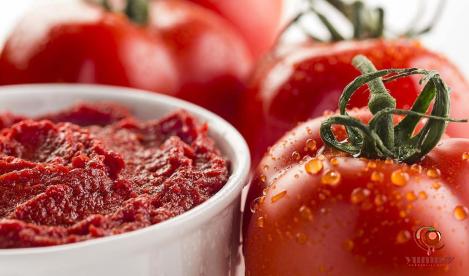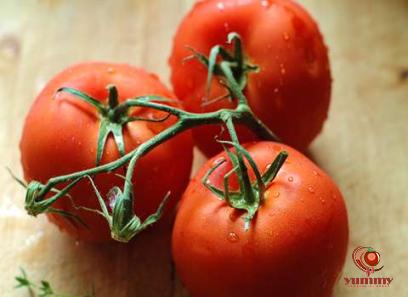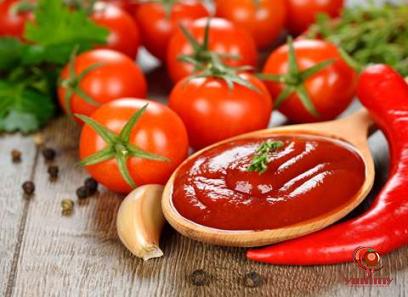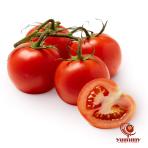homemade tomato paste purchase price + user guide

When it comes to cooking, homemade ingredients always reign supreme. Nothing can beat the flavor, freshness, and satisfaction of making your own pantry staples from scratch. One such staple that is a kitchen essential in many culinary traditions is tomato paste. While store-bought options are convenient, there is something truly special about creating your own homemade tomato paste.

.
 In this comprehensive guide, we will delve into the art of making homemade tomato paste, exploring its history, benefits, methods, and ways to use this versatile ingredient in your cooking. **History and Significance of Tomato Paste:** Tomatoes have been a staple in Mediterranean cuisine for centuries, with Italy being particularly known for its love affair with this versatile fruit. The precursor to modern tomato paste was “tomato conserva,” a concentrated tomato paste that was made by cooking tomatoes for hours until they reduced into a thick, flavorful paste. This method of preserving tomatoes was a game-changer, allowing people to enjoy the bright, tangy flavor of tomatoes year-round. **Benefits of Homemade Tomato Paste:** 1. Freshness and Flavor: When you make tomato paste at home, you have full control over the quality of ingredients used, ensuring maximum freshness and flavor.
In this comprehensive guide, we will delve into the art of making homemade tomato paste, exploring its history, benefits, methods, and ways to use this versatile ingredient in your cooking. **History and Significance of Tomato Paste:** Tomatoes have been a staple in Mediterranean cuisine for centuries, with Italy being particularly known for its love affair with this versatile fruit. The precursor to modern tomato paste was “tomato conserva,” a concentrated tomato paste that was made by cooking tomatoes for hours until they reduced into a thick, flavorful paste. This method of preserving tomatoes was a game-changer, allowing people to enjoy the bright, tangy flavor of tomatoes year-round. **Benefits of Homemade Tomato Paste:** 1. Freshness and Flavor: When you make tomato paste at home, you have full control over the quality of ingredients used, ensuring maximum freshness and flavor.
..
 2. Health Benefits: Homemade tomato paste is free from additives, preservatives, and excessive salt that are often found in commercial brands. 3. Cost-Effective: Making your own tomato paste can be cost-effective, especially if you have access to fresh, ripe tomatoes at a good price. **Methods of Making Homemade Tomato Paste:** There are several methods for making homemade tomato paste, each with its own unique advantages. Here are a few popular methods: 1. Oven Method: This method involves roasting halved tomatoes in the oven until they are caramelized and reduced in size. The roasted tomatoes are then blended into a smooth paste. 2. Stovetop Method: In this method, chopped tomatoes are simmered on the stovetop with onions, garlic, and herbs until they break down into a thick paste. 3. Slow Cooker Method: This method involves cooking tomatoes in a slow cooker on low heat for several hours until they are reduced to a thick paste.
2. Health Benefits: Homemade tomato paste is free from additives, preservatives, and excessive salt that are often found in commercial brands. 3. Cost-Effective: Making your own tomato paste can be cost-effective, especially if you have access to fresh, ripe tomatoes at a good price. **Methods of Making Homemade Tomato Paste:** There are several methods for making homemade tomato paste, each with its own unique advantages. Here are a few popular methods: 1. Oven Method: This method involves roasting halved tomatoes in the oven until they are caramelized and reduced in size. The roasted tomatoes are then blended into a smooth paste. 2. Stovetop Method: In this method, chopped tomatoes are simmered on the stovetop with onions, garlic, and herbs until they break down into a thick paste. 3. Slow Cooker Method: This method involves cooking tomatoes in a slow cooker on low heat for several hours until they are reduced to a thick paste.
…
 **Ingredients for Homemade Tomato Paste:** – Fresh, ripe tomatoes – Olive oil – Onions, garlic, and herbs (such as basil, oregano, and thyme) – Salt and pepper **Step-by-Step Guide to Making Homemade Tomato Paste:** 1. Start by washing and cutting the tomatoes in half, removing the cores and any blemishes. 2. Preheat your oven to 275°F (135°C) and place the tomato halves on a baking sheet, cut side up. 3. Drizzle the tomatoes with olive oil and sprinkle with salt and pepper. 4. Roast the tomatoes in the oven for 3-4 hours, or until they are caramelized and reduced in size. 5. Remove the tomatoes from the oven and let them cool slightly before transferring them to a blender. 6. Blend the roasted tomatoes until smooth, adding any desired herbs or seasonings. 7. Strain the tomato puree through a fine mesh sieve to remove any seeds or skins. 8. Transfer the strained tomato paste to a clean glass jar and store it in the refrigerator for up to a week. **Ways to Use Homemade Tomato Paste:** Homemade tomato paste is a versatile ingredient that can add depth and richness to a wide variety of dishes. Here are a few creative ways to use homemade tomato paste in your cooking: 1. Pasta Sauce: Add a spoonful of homemade tomato paste to your favorite pasta sauce for an extra boost of flavor. 2. Soups and Stews: Stir in some tomato paste to enrich the flavor of soups, stews, and chili. 3. Marinades: Use tomato paste as a base for marinades and rubs for meat and vegetables. 4. Pizza Sauce: Spread homemade tomato paste on pizza dough for a rich and flavorful base. **Storing Homemade Tomato Paste:** Homemade tomato paste can be stored in the refrigerator for up to a week, or frozen for longer storage. To freeze tomato paste, spoon it into ice cube trays and freeze until solid. Once frozen, transfer the tomato paste cubes to a resealable plastic bag and store in the freezer for up to 3 months.
**Ingredients for Homemade Tomato Paste:** – Fresh, ripe tomatoes – Olive oil – Onions, garlic, and herbs (such as basil, oregano, and thyme) – Salt and pepper **Step-by-Step Guide to Making Homemade Tomato Paste:** 1. Start by washing and cutting the tomatoes in half, removing the cores and any blemishes. 2. Preheat your oven to 275°F (135°C) and place the tomato halves on a baking sheet, cut side up. 3. Drizzle the tomatoes with olive oil and sprinkle with salt and pepper. 4. Roast the tomatoes in the oven for 3-4 hours, or until they are caramelized and reduced in size. 5. Remove the tomatoes from the oven and let them cool slightly before transferring them to a blender. 6. Blend the roasted tomatoes until smooth, adding any desired herbs or seasonings. 7. Strain the tomato puree through a fine mesh sieve to remove any seeds or skins. 8. Transfer the strained tomato paste to a clean glass jar and store it in the refrigerator for up to a week. **Ways to Use Homemade Tomato Paste:** Homemade tomato paste is a versatile ingredient that can add depth and richness to a wide variety of dishes. Here are a few creative ways to use homemade tomato paste in your cooking: 1. Pasta Sauce: Add a spoonful of homemade tomato paste to your favorite pasta sauce for an extra boost of flavor. 2. Soups and Stews: Stir in some tomato paste to enrich the flavor of soups, stews, and chili. 3. Marinades: Use tomato paste as a base for marinades and rubs for meat and vegetables. 4. Pizza Sauce: Spread homemade tomato paste on pizza dough for a rich and flavorful base. **Storing Homemade Tomato Paste:** Homemade tomato paste can be stored in the refrigerator for up to a week, or frozen for longer storage. To freeze tomato paste, spoon it into ice cube trays and freeze until solid. Once frozen, transfer the tomato paste cubes to a resealable plastic bag and store in the freezer for up to 3 months.


 Phone number:
Phone number:  WhatsApp Response:
WhatsApp Response:











